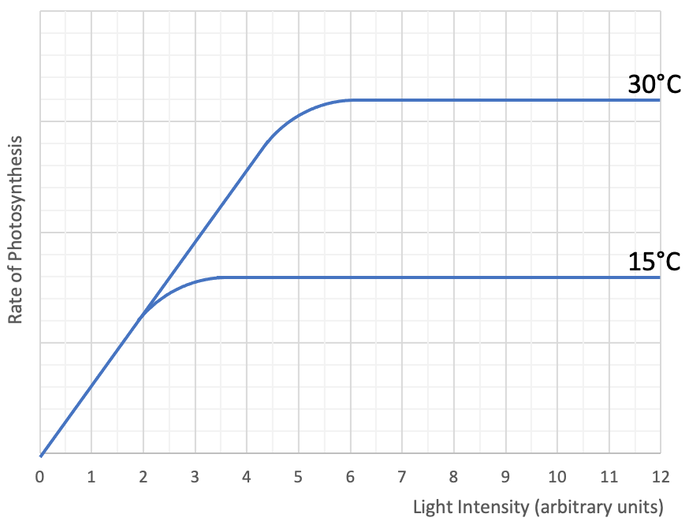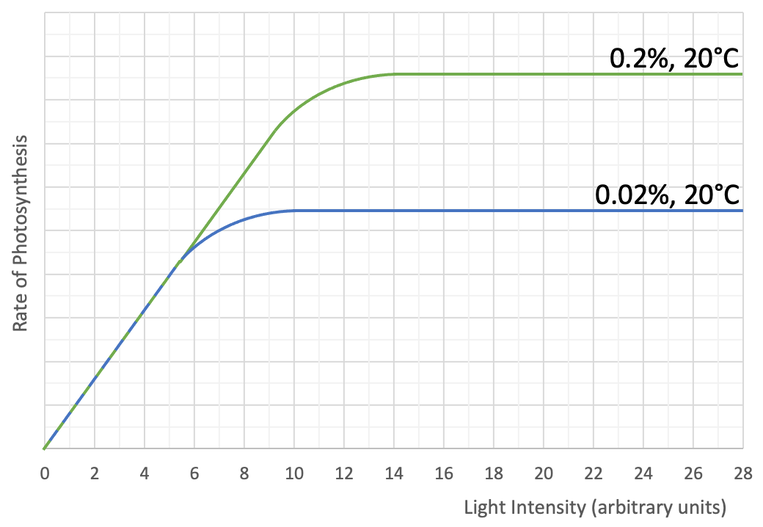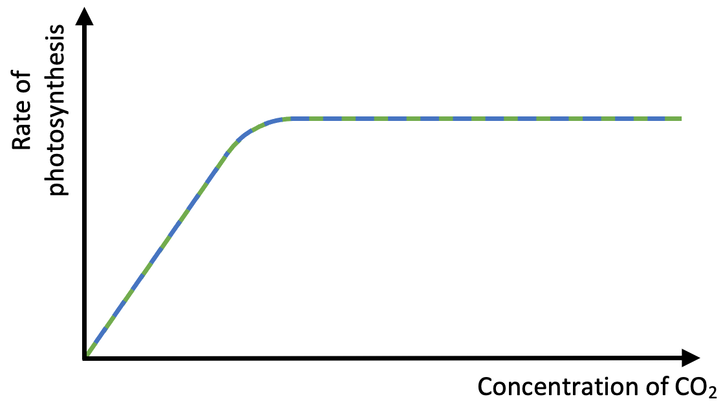Back to B4 Home
B4: Quiz 3
B4: Quiz 3
1)
a) What are the three main factors that affect the rate of photosynthesis?
b) What is a limiting factor?
2) The graph below has light intensity on the x axis and the rate of photosynthesis on the y axis. One of the curves is drawn for a temperature of 15°C and the other curve is drawn for a temperature of 30°C.
a) What are the three main factors that affect the rate of photosynthesis?
b) What is a limiting factor?
2) The graph below has light intensity on the x axis and the rate of photosynthesis on the y axis. One of the curves is drawn for a temperature of 15°C and the other curve is drawn for a temperature of 30°C.
a) For the 15°C curve, when does light intensity stop being a limiting factor? Give your answer in arbitrary units.
b) For the 30°C curve, when does light intensity stop being a limiting factor? Give your answer in arbitrary units.
c) For the 15°C curve, what is the limiting factor when the curve becomes flat? Explain your answer.
3) The graph below has light intensity on the x axis and the rate of photosynthesis on the y axis. One of the curves is for a concentration of carbon dioxide of 0.2% and a temperature of 20°C (green line), and the other curve is for a concentration of carbon dioxide of 0.02% and a temperature of 20°C (blue line).
b) For the 30°C curve, when does light intensity stop being a limiting factor? Give your answer in arbitrary units.
c) For the 15°C curve, what is the limiting factor when the curve becomes flat? Explain your answer.
3) The graph below has light intensity on the x axis and the rate of photosynthesis on the y axis. One of the curves is for a concentration of carbon dioxide of 0.2% and a temperature of 20°C (green line), and the other curve is for a concentration of carbon dioxide of 0.02% and a temperature of 20°C (blue line).
The curve for a concentration of carbon dioxide of 0.02% and a temperature of 20°C becomes flat at around a light intensity of 10 arbitrary units; what is the limiting factor for these conditions when the curve becomes flat? Explain your answer.
4) The graph below has the concentration of carbon dioxide on the x axis and the rate of photosynthesis on the y axis. The curves for a temperature of 20°C (green) and 30°C (blue) look exactly the same.
4) The graph below has the concentration of carbon dioxide on the x axis and the rate of photosynthesis on the y axis. The curves for a temperature of 20°C (green) and 30°C (blue) look exactly the same.
The three factors that affect the rate of photosynthesis are light intensity, concentration of carbon dioxide and temperature. When both the 20°C and 30°C curves become flat, what must be the limiting factor? Explain why the other factors cannot be the limiting factor.



